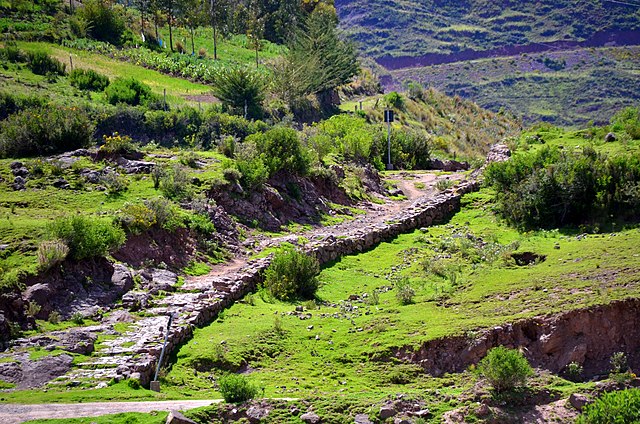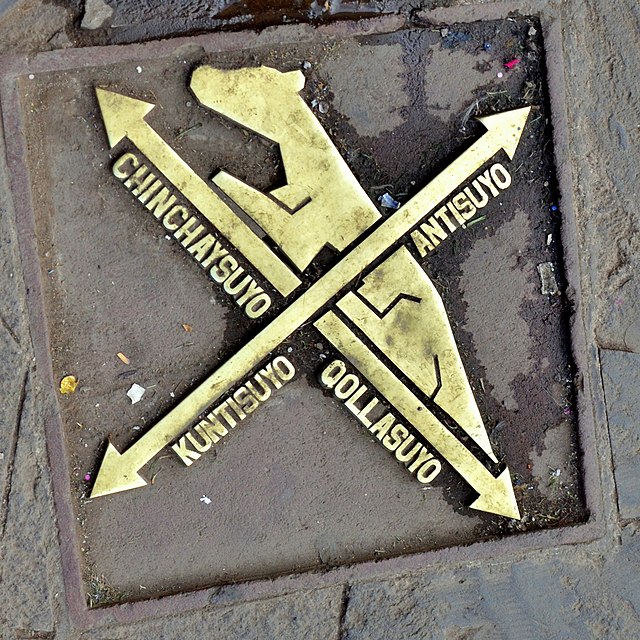A qullqa (Quechua pronunciation: [ˈqʊʎˌqa] "deposit, storehouse"; was a storage building found along roads and near the cities and political centers of the Inca Empire. These were large stone buildings with roofs thatched with "ichu" grass, or what is known as Peruvian feathergrass. To a "prodigious [extent] unprecedented in the annals of world prehistory" the Incas stored food and other commodities which could be distributed to their armies, officials, conscripted laborers, and, in times of need, to the populace. The uncertainty of agriculture at the high altitudes which comprised most of the Inca Empire was among the factors which probably stimulated the construction of large numbers of qullqas.
A complex of 27 Qullqas above Ollantaytambo, Peru
Qullqas (Inca Warehouses) by Guaman Poma
The remains of a qullqa in the Mantaro River Valley
The Inca road system was the most extensive and advanced transportation system in pre-Columbian South America. It was about 40,000 kilometres (25,000 mi) long. The construction of the roads required a large expenditure of time and effort.
Extent of the Inca road system
Section of the Inca road
Cusco, Peru - plaque indicating the 4 directions of the 4 regions (suyus) of the Inca Empire
A view of the Inca road climbing a hillside at the Mosollaqta lake, Peru






